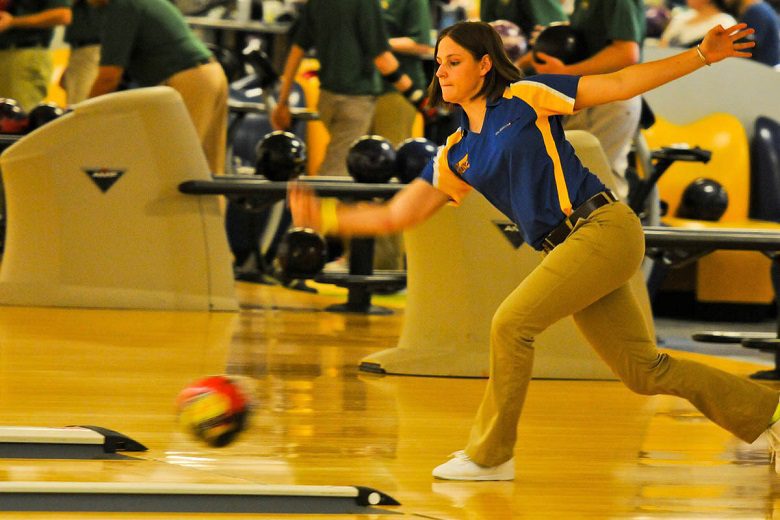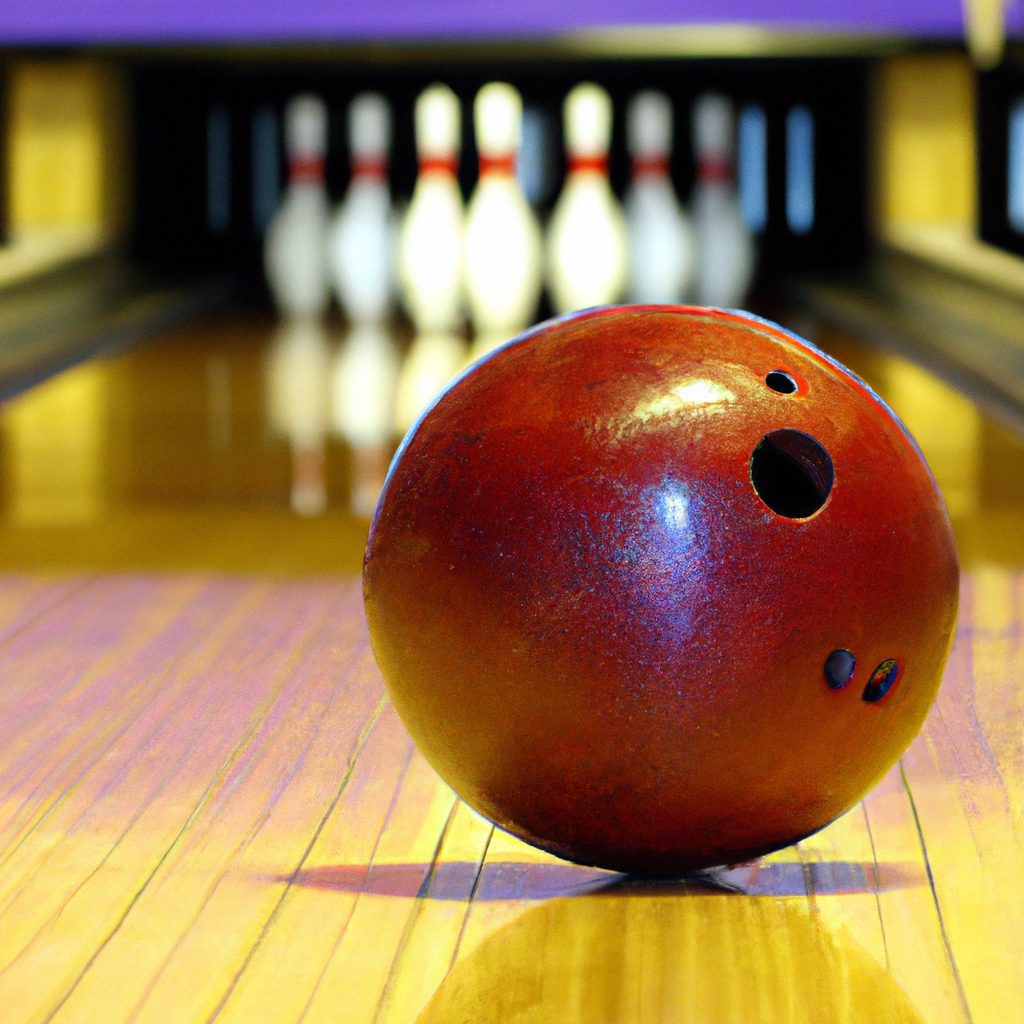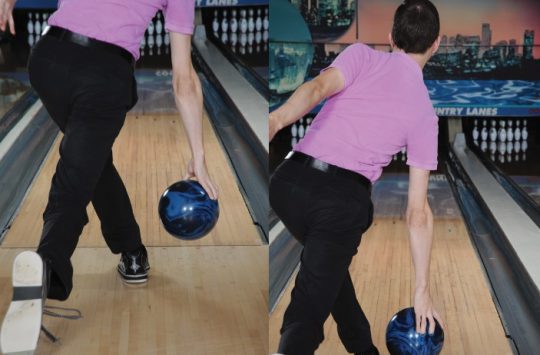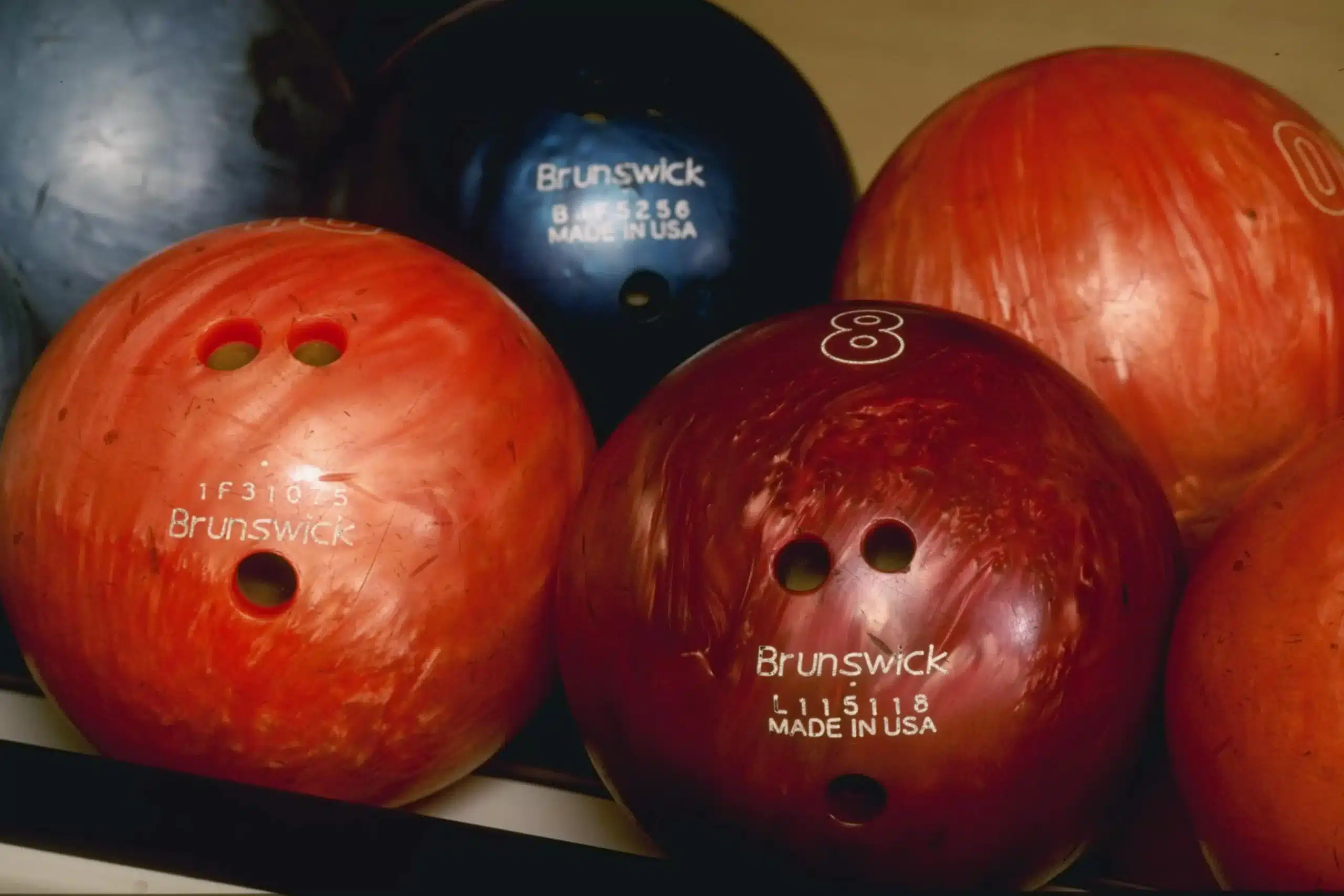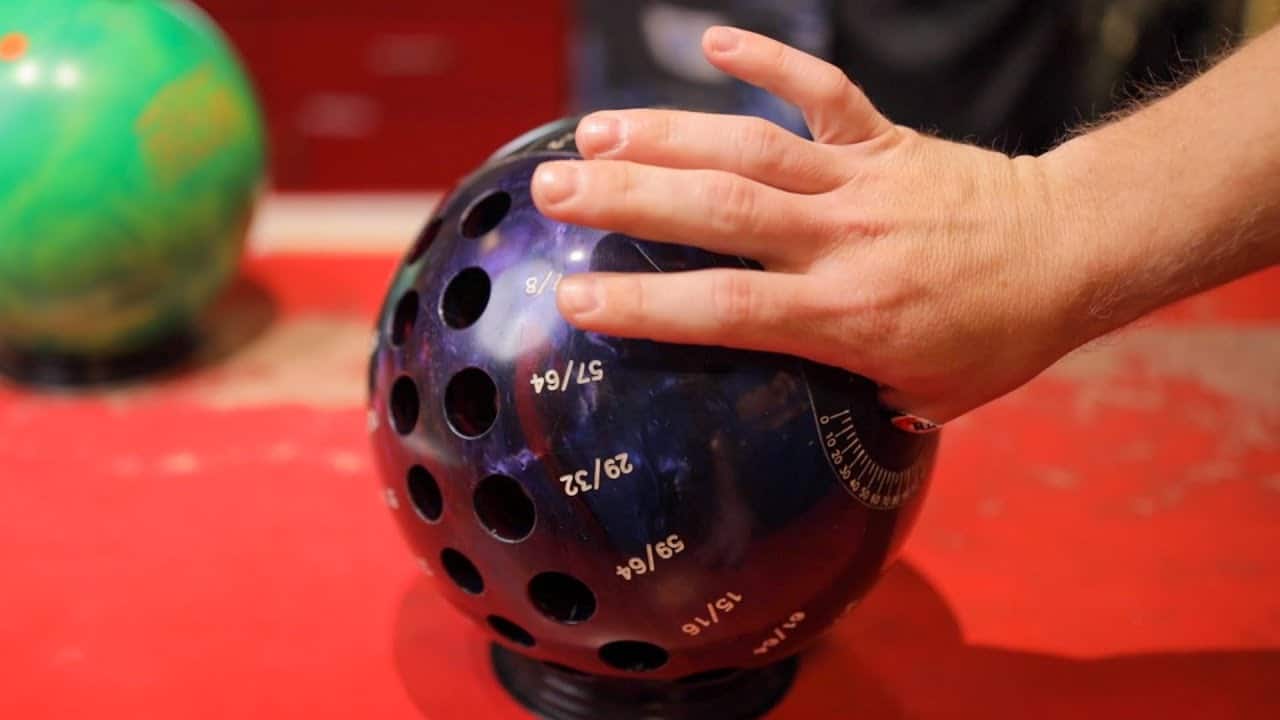Have you ever wondered why bowlers let their arm swing when delivering the ball? It may seem like a simple motion, but there’s actually a lot more to it than meets the eye. In this article, we’ll explore the reasons behind this common technique used by bowlers. By understanding the purpose behind the arm swing, you’ll gain a deeper appreciation for the skill and strategy involved in this beloved sport. So grab your bowling shoes and let’s uncover the secrets behind the art of the arm swing!
Review contents
Understanding the Mechanics of Bowling
Bowling is a popular sport enjoyed by millions of people worldwide. To excel in this game, it is crucial to understand the mechanics of bowling, including the role of arm swing, body position, and alignment. By mastering these fundamental aspects, bowlers can improve their technique, generate power and speed, and maintain balance throughout their delivery.
Body Position and Alignment
Proper body position and alignment are essential in achieving consistency and accuracy in bowling. To start, we must ensure that our feet are properly lined up with our target. Maintaining a shoulder-width stance, with our non-bowling shoulder aligned towards the target, helps create a solid foundation for our approach. Additionally, keeping our knees slightly bent and our body balanced over our hip and knee joints promotes stability and fluidity in our movements.
Grip and Release
Getting a dependable grip on the bowling ball is crucial for a successful delivery. We must find a grip that feels comfortable and secure in our hand. The fingers should be inserted up to the second knuckle, allowing for control without excessive tension. With a well-fitted grip, we can achieve an efficient release, smoothly transferring the ball from our hand to the lane. Consistently refining our grip and release technique is crucial for a consistent and accurate delivery.
Importance of Arm Swing
The arm swing plays a vital role in the mechanics of bowling, enabling us to generate momentum, maintain timing and rhythm, create power and speed, and stay balanced throughout our delivery. Understanding the relationship between body alignment and arm swing is key to achieving an effective and efficient motion.
The Role of Arm Swing in Bowling
Generating Momentum
A fluid and consistent arm swing help generate momentum in bowling. As we begin our delivery, our arm should naturally swing backward, like a pendulum, allowing us to gather energy. With a relaxed and controlled motion, we can smoothly transition from the backswing to the forward swing, propelling the ball down the lane with momentum. This momentum helps create force and power behind our shots, increasing the chances of knocking down pins.
Aiding in Timing and Rhythm
Timing and rhythm are crucial elements in bowling, and a synchronized arm swing can greatly contribute to their consistency. By syncing our arm swing with our footwork, we can achieve a coordinated and balanced approach. As our feet move in sync with the arm swing, our release becomes more accurate, allowing us to hit targeted spots with greater precision. Maintaining a steady and rhythmic arm swing helps create a sense of flow and control throughout the entire delivery.
Creating Power and Speed
An effective and well-executed arm swing contributes to the power and speed of the ball. As the arm swings forward, transferring energy from the body, we can generate force behind the release. Emphasizing a smooth and fluid motion allows for the transfer of power from the lower body to the arm, resulting in increased ball speed. The combination of proper technique and controlled aggression in the arm swing contributes to a powerful and speedy delivery.
Maintaining Balance
Balance is crucial in any sport, and bowling is no exception. A well-balanced arm swing is essential for staying in control throughout the entire delivery. By maintaining a consistent and steady motion, we can avoid overextension and unnecessary body movements that may throw off our balance. Furthermore, grounding ourselves and staying centered allows for improved stability and accuracy, reducing the chances of errant shots.
Body Alignment and Arm Swing
Proper Stance and Approach
The foundation of a successful arm swing begins with a proper stance and approach. Finding a comfortable and balanced stance allows for a solid platform from which to execute the delivery. As we prepare to approach the foul line, our arm should relax naturally, hanging straight down from our shoulder. This position sets the stage for a smooth and rhythmic arm swing, providing a seamless transition from the backswing to the forward swing.
The Relationship Between Arm Swing and Footwork
The arm swing and footwork go hand in hand in the mechanics of bowling. Coordinating these two components ensures a harmonious and systematic delivery. As we start our approach, our arm begins its backward swing, in sync with the first step of our footwork. This simultaneous motion enhances the timing and rhythm of our delivery, allowing for a more controlled and accurate release. Maintaining this relationship between the arm swing and footwork ensures a cohesive and effective bowling motion.
Balance and Stability
Achieving balance and stability in bowling is crucial to a successful delivery, and the arm swing plays a significant role in maintaining these factors. Excessive or erratic movements during the arm swing can lead to a loss of balance and stability, resulting in errant shots. By practicing a controlled and consistent arm swing, we can minimize unnecessary body shifts and stay grounded throughout the delivery. This focus on balance and stability enables us to execute shots with accuracy and precision.
The Relationship Between Arm Swing and Grip
Consistency in Grip Pressure
The relationship between the arm swing and grip pressure is vital in achieving a consistent and reliable delivery. An overly tight or loose grip can negatively impact the arm swing, leading to inconsistencies in the release. Maintaining a consistent grip pressure throughout the swing allows for a smooth transition from the backswing to the forward swing, promoting a more accurate and controlled release. Regularly checking and adjusting our grip pressure helps ensure a dependable and repeatable arm swing.
Creating a Smooth Transition
The transition from the backswing to the forward swing is a critical moment in the arm swing. Achieving a smooth and seamless transition enhances the fluidity and accuracy of our delivery. By coordinating our grip, wrist, and arm movements, we can establish a harmonious connection between these elements. Focusing on maintaining a relaxed and controlled transition allows us to maximize the potential energy generated during the backswing and efficiently transfer it to the forward swing.
Incorporating Wrist Action
Utilizing wrist action in conjunction with the arm swing can enhance the rotation and motion of the ball. By incorporating a controlled wrist snap at the release point, we can create additional revolutions on the ball, increasing its hook potential and overall effectiveness. Coordinating the arm swing with the wrist action allows for a consistent and synergistic motion, leading to improved accuracy and results on the lane.
Generating Momentum and Ball Path
The Pendulum Effect
The pendulum effect is a fundamental principle in harnessing momentum in the bowling arm swing. As the arm swings backward and forward, it mimics the motion of a pendulum, utilizing the energy of the swinging motion to generate power and speed. The pendulum effect allows the ball to follow a smooth and predictable path, optimizing its trajectory down the lane. Mastering this technique helps bowlers achieve consistent ball path and increased pin carry, resulting in higher scores.
Creating Forward Momentum
To maximize the effectiveness of the arm swing, bowlers must focus on creating forward momentum. The backward swing initiates this forward motion, gathering energy before transitioning to the forward swing. By emphasizing the acceleration of the arm swing as it moves forward, we can generate additional speed and optimize the release. This forward momentum aids in propelling the ball down the lane with power and accuracy, increasing the chances of a successful and impactful shot.
Controlling the Swing Path
Maintaining control over the swing path ensures consistent and accurate deliveries. The swing path refers to the trajectory of the arm swing, from the backswing to the point of release. Consistency in the swing path leads to reliable ball motion and predictable outcomes. By aiming to keep the swing path in a straight line, avoiding excessive lateral or angular movements, bowlers can enhance their ability to hit their target consistently. Focusing on a controlled and purposeful swing path leads to improved shot execution and desired results.
Timing, Rhythm, and Arm Swing
Syncing Arm Swing with Footwork
Timing and rhythm are essential components of a successful arm swing in bowling, and syncing it with our footwork is paramount. As we approach the foul line, it is crucial to coordinate the forward motion of our arm swing with the final stride of our footwork. This synchronization allows for a smooth and seamless release, enhancing accuracy and consistency. Practicing this coordination between the arm swing and footwork helps develop a rhythmic and well-timed delivery.
Finding the Right Tempo
Finding the right tempo in our arm swing helps maintain consistent timing and rhythm throughout our delivery. The tempo refers to the speed and pace at which the arm swings. Some bowlers favor a slower, deliberate tempo, while others prefer a faster, more aggressive approach. Experimenting with different tempos and finding the one that suits our natural style and technique is key. Once we establish a comfortable tempo, we can focus on repeating it consistently, leading to improved timing and rhythm in our arm swing.
Maintaining Consistent Timing
Consistent timing is vital in achieving accuracy and repeatability in bowling. By maintaining consistent timing between our arm swing, footwork, and release, we can enhance our ability to hit our intended target consistently. Regular practice and repetition help develop muscle memory, allowing us to execute our deliveries with precision. By focusing on maintaining consistent timing, we can refine our technique and become more confident in our ability to deliver quality shots.
Power and Speed in Arm Swing
Generating Power from Lower Body
Generating power in the arm swing begins with a strong foundation in the lower body. As we approach the foul line, our legs and hips drive the motion, transferring energy to the arm swing. By utilizing the power from our lower body, we can achieve a fluid and forceful arm swing, resulting in increased speed and impact on the pins. Developing strength and stability in the lower body helps optimize the power generation process and contributes to a powerful and effective delivery.
Transferring Energy to Arm Swing
Effectively transferring energy from the lower body to the arm swing is essential in bowling. As we complete our approach, the energy generated from our legs and hips is transferred through the core and into the arm swing. This transfer of energy fuels the release, increasing velocity and force behind the ball. Focusing on a smooth and coordinated transfer allows us to harness the full potential of our body’s power, resulting in a dynamic and impactful arm swing.
Developing Controlled Speed
Controlled speed is a vital component of a successful arm swing. While power and speed are desirable in bowling, maintaining control ensures accuracy and consistency. Bowlers must develop the ability to regulate their arm swing speed to achieve the desired level of control. By focusing on a controlled and balanced approach, we can effectively manage our arm swing speed without sacrificing power or accuracy. Striking the right balance between speed and control contributes to a well-executed and reliable delivery.
Maintaining Balance and Stability
Counterbalancing Body Movements
Maintaining balance is crucial in bowling, and counterbalancing body movements plays a significant role in achieving it. Proper counterbalancing helps align the body while the arm swing is in motion, reducing the chances of losing stability during the delivery. By coordinating the movements of the body and the arm swing, we can minimize unnecessary shifts and rotations that may disrupt our balance. Consistent practice and focus on counterbalancing allow us to maintain stability throughout the entire delivery, resulting in improved accuracy and performance.
Avoiding Overextension
Overextension in the arm swing can lead to inconsistencies and loss of control. It is essential to avoid excessive or exaggerated movements that may compromise balance and stability. By focusing on a controlled and compact swing motion, we can maintain a consistent and effective release. Avoiding overextension of the arm swing allows us to execute shots with greater accuracy and precision, increasing the likelihood of hitting our desired target consistently.
Being Centered and Grounded
Being centered and grounded is crucial for maintaining balance and stability in the arm swing. As we approach the foul line, it is essential to keep our body aligned and our weight evenly distributed. Remaining centered allows for a more controlled and efficient arm swing, reducing the chances of overreaching or drifting off balance. Additionally, grounding ourselves by maintaining solid contact with the approach promotes stability, providing a solid foundation for the arm swing. A centered and grounded position enhances our ability to deliver quality shots consistently.
Common Arm Swing Issues and Solutions
Swinging Too High or Too Low
Swinging the arm too high or too low can lead to inconsistency and decreased accuracy. A high swing may result in a loss of control due to excessive tension and unnecessary force. On the other hand, a low swing may impede the generation of power and speed. To address these issues, bowlers should focus on maintaining a balanced and controlled swing path, aiming for a comfortable mid-range height. Regular practice and awareness of swing height enable bowlers to correct any issues and establish a consistent and effective arm swing.
Lack of Straight Arm Swing
A lack of a straight arm swing can lead to inconsistencies and errant shots. A bent or misaligned arm during the swing can disrupt the intended ball path and reduce accuracy. By focusing on maintaining a straight and aligned arm throughout the swing, we can optimize the delivery and promote a consistent release. Regular practice and attention to form allow for the correction of any misalignment or deviation, leading to improved accuracy and results.
Adjusting Swing Length
The length of the arm swing can greatly impact the overall delivery. A swing that is too short may limit power and speed, while an overly long swing can lead to timing issues and loss of control. Finding the optimal swing length that suits our natural style and technique is essential. By experimenting with different lengths and observing the results, we can determine the most effective swing length for our game. Regular practice and adjustment help refine the swing length, leading to improved consistency and performance.
Addressing Arm Swing Timing
Timing issues in the arm swing can result in inconsistent deliveries and decreased accuracy. A mistimed swing may cause the ball to be released too early or too late, impacting the desired ball path and target accuracy. Recognizing and addressing timing issues require focus and regular practice. By working on synchronizing the arm swing with our footwork and release, we can improve our timing and achieve more consistent and accurate shots.
Improving the Arm Swing
Drills and Exercises
Engaging in specific drills and exercises can help improve the arm swing in bowling. These drills focus on various aspects, such as grip pressure, swing path, timing, and release technique. Practicing drills that target these areas allows us to fine-tune our arm swing and address specific areas for improvement. By dedicating time to drills and exercises, we can develop muscle memory, enhance technique, and refine our overall delivery.
Working with a Coach or Instructor
Seeking guidance from a coach or instructor is highly beneficial in improving the arm swing. These professionals can provide valuable insights, identify areas of improvement, and offer personalized tips and techniques. Through one-on-one coaching sessions, they can analyze our technique, correct any flaws, and guide us in developing a more effective arm swing. Working with a coach or instructor provides invaluable support and guidance on our journey to improving the arm swing in bowling.
Analyzing Video Footage
Recording and analyzing video footage of our arm swing can provide valuable feedback and insights into our technique. By reviewing our delivery from different angles, we can identify any possible faults or areas of improvement. Paying attention to details such as swing path, release, and timing allows us to make necessary adjustments and refine our arm swing. Video analysis is a powerful tool that enables us to objectively assess our performance and make targeted improvements.
Developing Muscular Strength and Flexibility
Optimal performance in bowling requires considerable muscular strength and flexibility. Developing these physical attributes contributes to an efficient and powerful arm swing. Exercises targeting the muscles involved in the arm swing, such as the shoulders, back, and forearm, help build strength and endurance. Additionally, incorporating stretching and mobility exercises improves flexibility, allowing for a greater range of motion in the arm swing. Regular strength and flexibility training further enhance our ability to execute a fluid and impactful arm swing.
By understanding the mechanics of bowling, focusing on key fundamentals, and consistently practicing and refining our arm swing, we can transform our bowling game. The arm swing serves as a crucial component in achieving accuracy, power, and consistency on the lanes. With dedication and a focus on technique, we can master the art of the arm swing, take our bowling to new heights, and experience the joy and satisfaction that come with delivering the perfect shot.




![Spare bowling ball Top 10 in 2024. (reviews) Top 10 Best Spare Bowling Balls [2021 Reviewed]](http://landofbowling.com/wp-content/uploads/2021/07/Top-10-Best-Spare-Bowling-Balls-2021-Reviewed.jpg)










